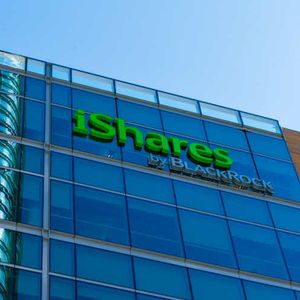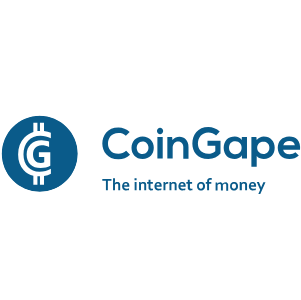

IBIT: Why The Halving May Still Impact Prices Going Forward
Summary Bitcoin halving event raises the floor and lifts the ceiling on Bitcoin price, increasing its trading range. AI computing demand competes with Bitcoin mining, with some miners diversifying their income through AI projects. Mt. Gox potentially distributing $9.5 billion worth of Bitcoin, which could impact the market if it aligns with a bearish climate. I've been arguing that the Bitcoin ETF launches, like the iShares Bitcoin Trust ( IBIT ), as well as the halving event (which recently happened) were a big deal for Bitcoin. That's not immediately evident if we look at the price action post halving. Data by YCharts Previously, see Bitcoin ETF Approval What Does It Mean For Crypto Stocks, I wrote that I wasn't too sure where BItcoin was headed in the short-term. At the time, it was still below $50k. But I expected the selling post the launches of the Bitcoin ETF's to be short lived. One major reason being the halving event that would quickly become the next thing in focus. Now it may appear like the market anticipated the halving and drove prices up ahead of time. Meanwhile, the event itself is a dud. Although the halving is a discrete event it shouldn't be viewed like an "event" similar to a corporate take-over or a dramatic election outcome like we've recently seen in Argentina. Instead, the halving limits the rewards that go to miners which drives up their costs and leads to a decrease of supply of Bitcoin over time. However, Bitcoin sales by miners are just one factor in the supply and demand dynamic. Sentiment among retail and institutional traders can easily dwarf the change on this front. When Bitcoin rose sharply at the end of 2023 and at the start of 2024 this lead to miners raising quite a bit of fresh capital and investing in new mining equipment. They did so to attempt to maintain revenue post-halving but this also mitigated some of the supply loss due to the halving. I like to think of the halving as raising the floor on the Bitcoin price and lifting the ceiling. I'm still not certain where the price will go but if people continue to view Bitcoin as an interesting asset its trading range has likely moved up. Coinshares published an interesting report on the break-even prices for miners post-halving and they estimate it went from $29.5k per Bitcoin to $53k per Bitcoin. Bitcoin mining rewards (Coinshares) One thing that really stood out to me from the report is that AI computing demand seems to compete quite directly with Bitcoin mining: Our recent mining company management discussions reveal a notable shift, with some miners increasingly turning to AI at their energy-secure sites. Although this trend is relatively new, companies like Hve and Hut 8 report 3.6% and 2.9% of their revenues from AI, respectively, with others also developing AI projects. We are witnessing a growing preference for AI over Bitcoin mining in these energy-secure locations. Looking ahead, it is conceivable that Bitcoin mining could become predominantly based at energy-insecure stranded energy sites, especially where it can subsidise such energy projects financially. Conversely, miners seeking revenue diversification and potentially higher margins are likely to invest in AI, exacerbating this divergence. I'm skeptical of the share prices that most publicly traded miners trade at. When there is a willingness to "diversify" income by performing AI compute that makes me even more skeptical. It may be solid business to run data centers but it's not generally a business that trades at astounding multiples of earnings, free cash flow or book value. However, the urgency with which companies and governments invest in AI and AI capacity is real. Just this week a bipartisan group of U.S. senators has been calling for a $32 billion increase in government funding into AI. This isn't immediately relevant to the Bitcoin price right now. It does suggest the demand for datacenter locations and hardware is likely to remain high meaning it won't be as easy for miners to bring on capacity as it could otherwise have been. Meanwhile, Crypto research firm K33 Research has argued Tuesday report that Mt. Gox, may be distributing up to $9.5 billion worth of Bitcoin. Potentially, as early as this month. This has been a known bearish argument for a while as the payouts were delayed multiple times. It could definitely make an impact if distributions line-up awkwardly with a bearish crypto climate. Otherwise, it could easily be a non-event. The Bitcoin market cap is well over a trillion. To put it in some perspective; Apple's market cap is $2.91 trillion and it just launched a $110 billion buyback program. Meanwhile, flows into the crypto ETFs look to be picking up and I think these will be quite important in driving Bitcoin's valuation in the near term. Bitcoin ETF flows (Coinglass) The most important consideration whether to invest in IBIT is whether Bitcoin exposure is desirable or not. After all this is a one asset ETF. I've compared the major U.S. based Bitcoin ETF's when they were launched see; How To Choose Between The Bitcoin ETFs . It is often argued, and I tend to agree, holding Bitcoin through self-custody is the best option. However, this introduces quite a bit of execution risk as the stories of people having lost access to their Bitcoin or got their wallet hacked are myriad. A potential advantage is that you never lose value if there is some kind of signficant hard fork (which is how Bitcoin Cash came to be), airdrop, switch to a proof of stake (like Ethereum) type of transaction verification model. The latter seems particularly unlikely. Currently, this value loss isn't a hugely signficant issue given haven custody taken care of is worth something as well. Yet, down the line it is possible that the vulnerabilities the ETFs create become expoited and there will be a tracking error (besides fees) between Bitcoin and the ETFs. The fees aren't too bad though as IBIT charges 0.25% per year. It is still more than a broad-based equity ETF (arguably a more complicated product) but it is a far cry from the previous generation of products that often charged 2% or more. Blackrock, IBIT's sponsor, actually lowered the fees over the first $5 bilion for the first year to 0.16%. Currently there's already $18 billion in the fund and we're halfway through the year so that discount isn't as attractive anymore. If someone wants to get Bitcoin exposure through a U.S. based ETF IBIT is one of the best options because of liquidity, modest fees, and having the premier asset management firm put its reputation on the line. In conclusion, while the market's response to the recent Bitcoin halving didn't result in an immediate explosive price movement upwards as some expected, it is a significant milestone. It is likely to have raised the trading range of the asset. Miners start breaking even just below $60k now. When the price dips below that, or it trades close to that level, it doesn't make a lot of sense to invest in mining capacity. Meanwhile, the computing equipment ages quite quickly. This doesn't determine value but it does have an impact on supply. Demand for Bitcoin can fluctuate in surprising ways but there are no similary large changes on that front. That's why I continue to believe the halving is an event that's a positive for Bitcoin, and the potential upside far outweighs the downside.














